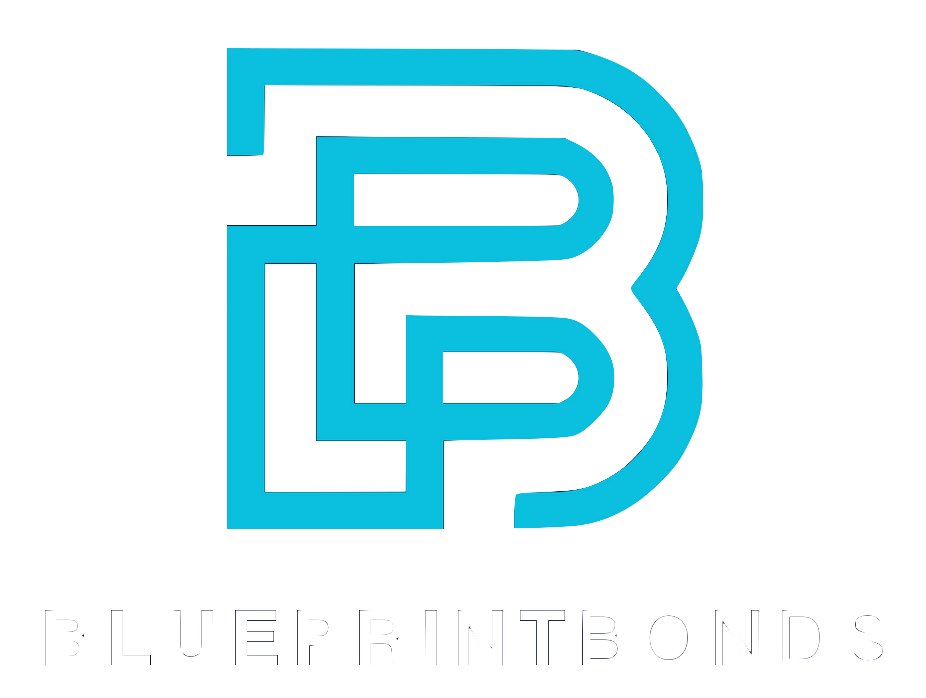In the construction industry, surety bonds are often seen as a necessary safeguard—a financial guarantee that projects will be completed on time and according to contract. While the benefits of bonding, such as reducing contractor default risk and ensuring project completion, are well-documented, the hidden costs associated with getting bonded rarely receive the attention they deserve. These costs extend beyond the straightforward premium fees and can impact small businesses, project timelines, and overall quality management in surprising ways.
Understanding these hidden costs is crucial for contractors, project managers, and business owners who want to navigate bonding requirements effectively without compromising their bottom line. This article dives deep into the less obvious expenses and challenges tied to surety bonds, supported by recent research and expert insights.
For those unfamiliar, surety bonds typically add an average of 1.5% to the cost of every construction project, a figure that might seem manageable on the surface but can compound significantly depending on project size and complexity. Research from Sage Journals highlights this average cost increase, setting the stage to explore what else lies beneath the surface.
The Direct Financial Impact of Bonding on Project Budgets
When contractors factor bonding into their bids, the immediate and most visible cost is the bond premium. This premium typically ranges from 0.5% to 3% of the contract value, with an average near 1.5%. While this may appear as just another line item in the budget, it influences pricing strategies and can affect competitiveness, especially for smaller firms. The need to account for this expense often leads contractors to adjust their overall bid amounts, which can inadvertently make them less competitive compared to larger firms that may absorb these costs more easily due to their economies of scale.
Beyond the premium, there are administrative and underwriting costs. Contractors must invest time and resources into preparing detailed financial statements, credit histories, and project documentation to qualify for bonds. These processes can delay project initiation and increase overhead expenses. Additionally, the complexity of the bonding process may require hiring specialized consultants or legal advisors, further inflating costs. This not only strains the financial resources of smaller contractors but can also divert attention from core project activities, impacting overall productivity and project timelines.
Moreover, bonding requirements can lead to lost opportunities. According to data from JWSuretyBonds.com, many small businesses lose an average of two contracts annually due to bonding demands, with 7% losing five or more. This loss is not just about missed revenue; it also impacts growth potential and market reputation. The inability to secure bonding can hinder a contractor's ability to establish relationships with larger clients or public sector entities, which often require bonding as a standard practice. Over time, this can create a significant gap in market presence, as larger competitors continue to secure contracts and expand their portfolios.
Why Bonding Costs Can Be Higher for Small Businesses
Small businesses often face steeper challenges in securing bonds. Their limited financial history and lower credit ratings can result in higher premiums or outright denials. In fact, over 40% of businesses have been denied bonds after formal applications, and 10% of those denials come without explanation. This lack of transparency can leave contractors feeling frustrated and uncertain about how to improve their standing for future applications, leading to a sense of helplessness in a system that seems stacked against them.
This barrier can create a vicious cycle where small contractors are priced out of bonding or excluded from bidding on lucrative projects, limiting their ability to build a track record that might improve future bonding prospects. As a result, many small businesses may find themselves in a precarious position, forced to either forgo potentially profitable contracts or to seek alternative financing options that may not offer the same level of security or credibility as a bond. This ongoing struggle not only stifles individual business growth but also contributes to a less diverse and competitive market landscape, ultimately affecting the overall health of the construction industry.
Quality Management and the Hidden Costs of Poor Bonding Practices
While bonding aims to protect project owners, it also indirectly influences quality management on construction sites. A study published by Springer found that the cost of quality (COQ) in construction projects can reach up to 15% of total project costs, with hidden failure costs being a significant contributor.
Surety bonds can mitigate some risks by ensuring contractors have a financial stake in completing projects properly. However, when bonding is viewed solely as a cost center rather than a quality assurance tool, companies may miss opportunities to leverage bonds for better performance outcomes. As noted by quality management experts, treating quality as merely a "thumbs up or bearer of bad news" neglects its strategic value in reducing costly failures and rework.
How Bonding Influences Contractor Behavior
Contractors aware of bonding requirements often adopt more rigorous project controls to avoid claims against their bonds. This can lead to improved scheduling, better subcontractor management, and enhanced communication with project owners. However, if bonding costs are perceived only as an expense, some firms may cut corners elsewhere to offset these costs, inadvertently increasing the risk of quality issues.
Moreover, the psychological impact of bonding on contractor behavior cannot be understated. When contractors recognize that their financial viability is tied to their performance, they are more likely to invest in training and development for their teams. This investment not only enhances skill sets but also fosters a culture of accountability and pride in workmanship. For instance, contractors may implement more thorough quality checks or invest in advanced technology to monitor project progress, which can lead to fewer defects and greater client satisfaction.
On the flip side, when bonding is treated as a mere regulatory hurdle, it can lead to a culture of compliance rather than excellence. Contractors may focus on meeting minimum requirements rather than striving for superior outcomes. This mindset can result in a cycle of mediocrity, where projects are completed on time but not to the highest standards. The long-term implications of such an approach can be detrimental, as clients may experience increased maintenance costs and diminished trust in the contractor's capabilities, ultimately affecting future business opportunities.
The Broader Economic Value and Risks of Surety Bonds
Despite the hidden costs, bonding remains a pillar of risk management in construction. A comprehensive report by Ernst & Young highlights that bonded project portfolios consistently outperform non-bonded ones, demonstrating lower contractor default rates, reduced completion costs in case of default, and faster overall project delivery.
This economic value underscores why many state and federal laws mandate surety bonds for public and private projects. The same report emphasizes that bonding strengthens project performance and provides a safety net that benefits all stakeholders. In addition to enhancing financial security, surety bonds also promote a culture of accountability among contractors. By requiring a bond, project owners can ensure that contractors are more likely to adhere to timelines and quality standards, knowing that their financial reputation is on the line. This accountability can lead to improved relationships between contractors and project owners, fostering a collaborative environment that ultimately benefits the project's success.
However, the flip side is that unbonded projects carry significant risks, including costly delays and increased financial exposure for owners. These risks often translate into higher indirect costs that are rarely quantified upfront. For instance, when a contractor defaults, not only does the project owner face the immediate financial burden of hiring a new contractor, but they may also experience delays that can lead to lost revenue, especially in sectors like commercial real estate or infrastructure where time is literally money. Furthermore, the reputational damage caused by project delays can hinder future business opportunities, creating a ripple effect that extends beyond the current project.
For more on the economic benefits and risks, see the Ernst & Young report on surety bonding.
Balancing Bonding Costs with Project Risk
Project owners and contractors must weigh the upfront bonding costs against the potential financial fallout of contractor default or project failure. While bonding adds to project expenses, it often reduces the likelihood of catastrophic cost overruns and legal disputes. This balance is especially critical for large-scale projects where the stakes are high. In such cases, the cost of bonding can be viewed as a form of insurance, providing peace of mind that can lead to more strategic decision-making throughout the project lifecycle. Additionally, the presence of a surety bond can enhance a contractor's credibility, making it easier for them to secure financing and attract skilled labor, both of which are essential for maintaining project momentum.
Moreover, the evolving landscape of construction projects, particularly with the rise of technology and sustainable practices, further complicates the risk assessment process. As projects become more complex, involving multiple stakeholders and innovative materials, the importance of bonding becomes even more pronounced. Surety bonds not only serve as a financial guarantee but also as a tool for ensuring compliance with regulatory standards and environmental guidelines. This multifaceted role of surety bonds highlights their indispensable nature in modern construction, where the interplay of risk management and project execution is more critical than ever.
Challenges in the Bonding Process: Employment and Expertise
Behind the scenes, the bonding process relies heavily on cost estimators and underwriting professionals who assess project risks and contractor qualifications. According to the Bureau of Labor Statistics, cost estimators held around 227,900 jobs in 2023, with the largest share employed by specialty trade contractors. These professionals are not just number crunchers; they are integral to the construction ecosystem, ensuring that projects are financially viable and that contractors are adequately prepared to meet their obligations.
These professionals play a vital role in determining bond premiums and eligibility, but their work can also introduce delays and complexity. Inaccurate cost estimates or incomplete documentation can lead to higher premiums or bond denials, further complicating project financing. Moreover, the bonding process is not a one-size-fits-all scenario; each project presents unique challenges that require tailored solutions. As a result, the expertise of these professionals is critical in navigating the intricate landscape of bonding requirements and regulations, which can vary significantly by state and project type.
For contractors, understanding the nuances of cost estimation and bonding criteria is essential to avoid surprises and hidden expenses. This understanding not only helps in securing bonds but also fosters a more collaborative relationship with surety companies, which can lead to more favorable terms and conditions. Contractors who are well-versed in these areas are better positioned to present their qualifications and project plans effectively, thereby enhancing their credibility in the eyes of potential sureties.
Improving Bonding Outcomes Through Better Preparation
Contractors who invest in thorough financial reporting, accurate cost estimating, and transparent communication with surety providers tend to secure better bonding terms. This proactive approach reduces the risk of denials and helps manage bonding costs more effectively. Additionally, maintaining a strong financial health profile, including a solid credit rating and a history of successful project completions, can significantly bolster a contractor's standing with surety companies. These elements not only reflect a contractor's ability to manage projects but also demonstrate their reliability and commitment to quality work.
Furthermore, engaging in ongoing education about bonding processes and market trends can empower contractors to make informed decisions. Workshops, seminars, and industry conferences provide valuable insights into best practices and emerging challenges within the bonding landscape. By staying informed, contractors can adapt their strategies to meet changing market conditions, thereby enhancing their chances of obtaining favorable bonding arrangements. This continuous learning approach not only prepares contractors for current projects but also positions them for future opportunities in an increasingly competitive environment.
Conclusion: Navigating the Hidden Costs with Insight and Strategy
Surety bonds are indispensable tools in the construction industry, offering protection against contractor default and enhancing project reliability. However, the hidden costs—ranging from increased project expenses and lost contracts to quality management challenges and administrative burdens—require careful consideration.
By understanding these less visible expenses and their impact on small businesses and project outcomes, stakeholders can make more informed decisions. Embracing bonding not just as a cost but as a strategic investment in quality and risk mitigation can unlock better project performance and long-term economic value.
For those navigating bonding for the first time or looking to optimize their approach, staying informed about industry trends and expert insights is key. The balance between bonding costs and benefits is delicate but manageable with the right knowledge and preparation.
Learn more about the challenges small businesses face in bonding and contract losses at JWSuretyBonds.com.




